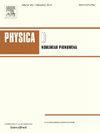Conservative deep neural networks for modeling competition of ribosomes with extended length
IF 2.7
3区 数学
Q1 MATHEMATICS, APPLIED
引用次数: 0
Abstract
We develop a network model that combines several ribosome flow models with extended objects (RFMEO) competing for the finite pool of ribosomes. This alleviates the need to systematically coarse-grain the mRNA molecules. The dynamics of the network is described by a system of non-linear ordinary differential equations. It is shown that the network always converges to a steady state for a fixed number of ribosomes. Our analysis shows that increasing any of the transition rates along an RFMEO increases its output rate and either the output rates of the other RFMEOs all increase or all decrease. Simulations also demonstrate a counterintuitive result that increasing the ribosomal footprint may sometimes lead to an increase in the network production rate. Next, we propose a conservative deep neural network (CDNN) framework to approximate the solution of the network. The proposed loss function also incorporates the term satisfying the first integral property of the network. Point-wise comparison of the solutions by CDNN is in good agreement with the Runge–Kutta based numerical solution. Also, the CDNN framework offers a closed-form solution of the RFMEONP as a function of free parameters, thus allowing evaluation of the solution at any parameter value without again simulating the system.
保守型深度神经网络为加长核糖体的竞争建模
我们开发了一种网络模型,将多个核糖体流模型与扩展对象(RFMEO)结合起来,争夺有限的核糖体池。这减轻了对 mRNA 分子进行系统粗粒化的需要。该网络的动态由非线性常微分方程系统描述。结果表明,在核糖体数量固定的情况下,网络总是趋于稳定状态。我们的分析表明,沿一个 RFMEO 增加任何一个转换率都会增加其输出率,而其他 RFMEO 的输出率要么全部增加,要么全部减少。模拟还证明了一个反直觉的结果,即增加核糖体足迹有时会导致网络生产率的增加。接下来,我们提出了一个保守型深度神经网络(CDNN)框架来近似网络的解决方案。提出的损失函数还包含满足网络第一积分属性的项。通过对 CDNN 的解进行点上比较,结果与基于 Runge-Kutta 的数值解非常一致。此外,CDNN 框架提供了 RFMEONP 作为自由参数函数的闭式解,因此可以在任何参数值下评估解,而无需再次模拟系统。
本文章由计算机程序翻译,如有差异,请以英文原文为准。
求助全文
约1分钟内获得全文
求助全文
来源期刊

Physica D: Nonlinear Phenomena
物理-物理:数学物理
CiteScore
7.30
自引率
7.50%
发文量
213
审稿时长
65 days
期刊介绍:
Physica D (Nonlinear Phenomena) publishes research and review articles reporting on experimental and theoretical works, techniques and ideas that advance the understanding of nonlinear phenomena. Topics encompass wave motion in physical, chemical and biological systems; physical or biological phenomena governed by nonlinear field equations, including hydrodynamics and turbulence; pattern formation and cooperative phenomena; instability, bifurcations, chaos, and space-time disorder; integrable/Hamiltonian systems; asymptotic analysis and, more generally, mathematical methods for nonlinear systems.
 求助内容:
求助内容: 应助结果提醒方式:
应助结果提醒方式:


